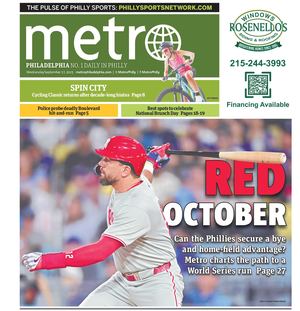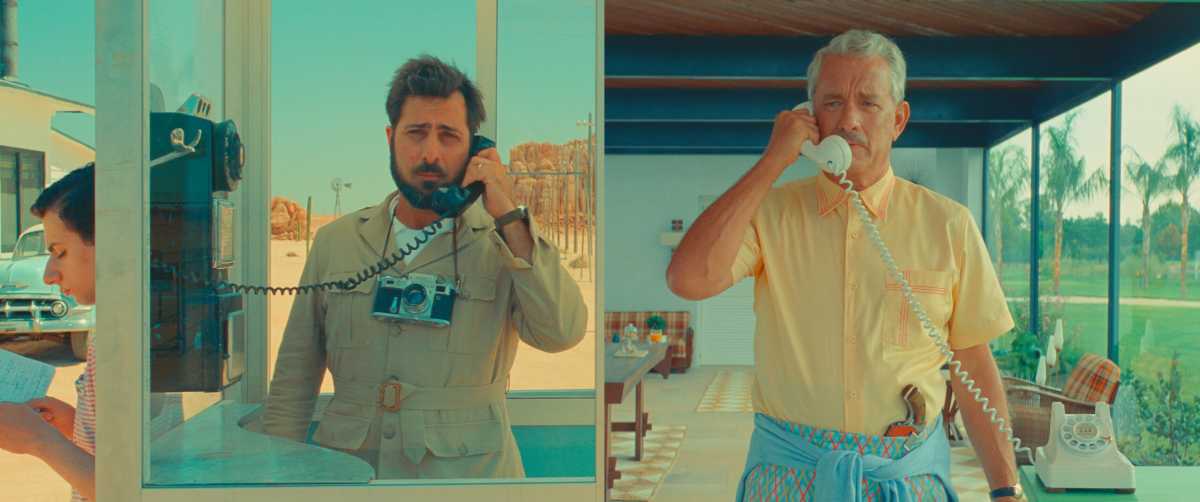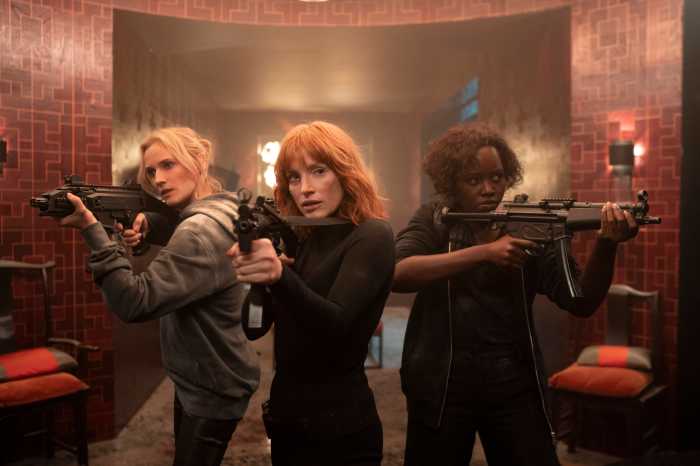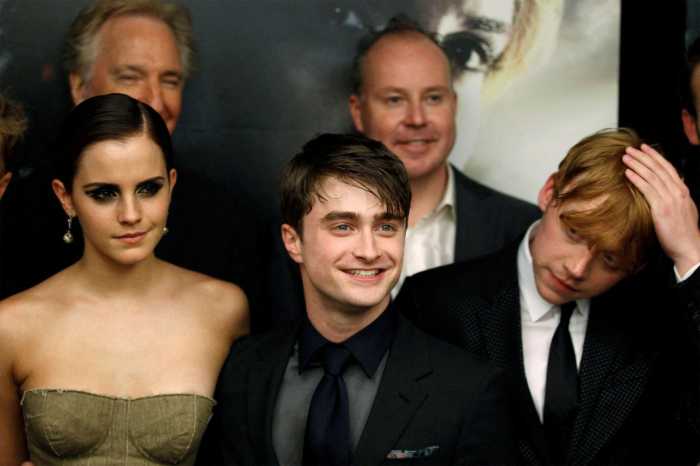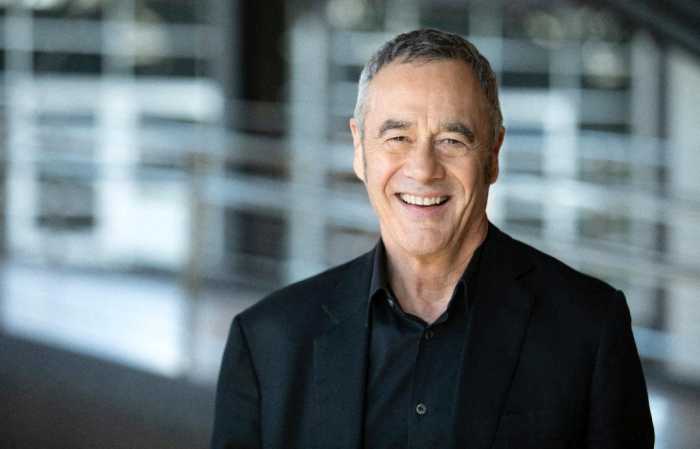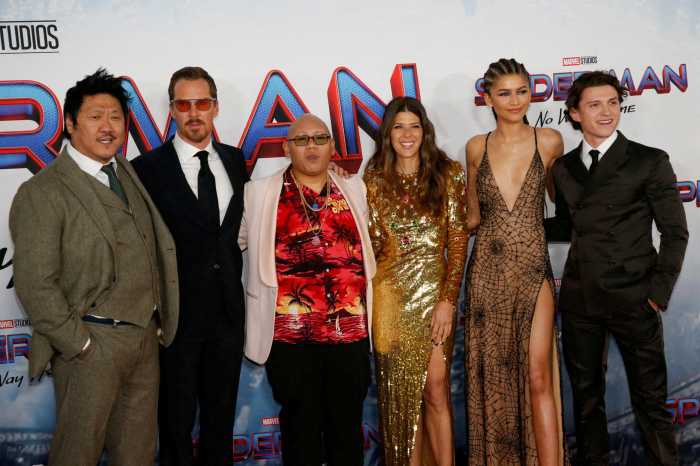It’s no secret that writer/director Wes Anderson knows how to put together a star-studded cast and place them in both interesting storylines and curious characters.
That rings true with Anderson’s latest feature ‘Asteroid City’, which takes the likes of Tom Hanks, Scarlett Johansson, Steve Carell, Liev Schreiber, Bryan Cranston, Maya Hawke, Edward Norton and Jason Schwartzman out to a fictional US desert town based in the 1950s. And it was one of the actors, Schwartzman, who inspired this film to be made in the first place.
“Usually, for me, starting a movie [and] starting to write a script, [there’s] usually not an idea for it. It’s a couple of ideas,” explains Anderson.
“We wanted to write a part for Jason Schwartzman at the center of a movie that would be something he hadn’t done before. So that was number one,” the director/writer continues. “That’s the beginning. And we didn’t really know what it was, but we sort of had a few notions about what this character was going through. The second thing was we were interested in [was] the setting of 1950s New York theater.”
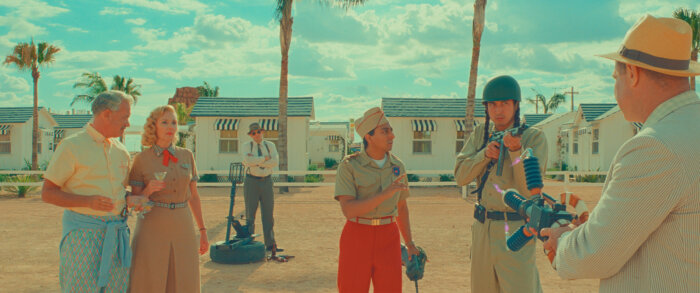
The New York theater aspect is the sort of ‘Inception’-esque aspect to ‘Asteroid City’. The film’s desert town story is actually a play being performed in NYC with the director (Adrien Brody) leading the cast of actors in their respective roles. Cranston acts as the narrator of the story, and you know immediately when you’re “behind the scenes” when the screen turns to black and white.
For the actual play itself, the desert town colors on the contrary stand out.
“It became something like this interaction of a black and white New York stage and a color cinema scope-ish western kind of story,” Anderson says. “And everybody’s both an actor and the role they’re playing, but there’s sort of one thing, too, and they kind of mix together.”
Some of the cast (like Schwartzman and Brody) have worked with Anderson in the past. For other cast members like Steve Park, Tom Hanks and Maya Hawke, the Wes Anderson experience was new. But, often thought about.
“I haven’t seen a Wes Anderson movie that I didn’t wish that I was in,” says Hanks. “So it was great to be a part of this. And the role was great—I think [Wes] used the reference of, ‘We’re looking for a retired Ronald Reagan type.’ And I go, ‘I’m your man.'”
Steve Park agreed: “It’s just a beautiful realization of everything. Wes started by sending pictures and images and the soundtrack, ‘Train to San Fernando’. And then the animatic… and then to actually see the film, it’s mind-blowing.”
The story essentially follows a Junior Stargazer/Space Cadet convention where some kid geniuses (like Jake Ryan, Sophia Lillis and a few other young talents) and their families take a trip to the vacant city, which states on its welcome sign that it boasts a population of about 87.
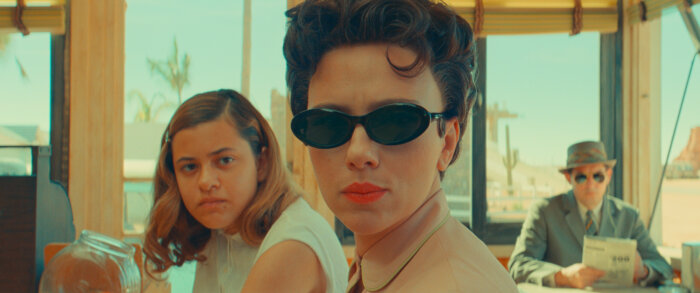
While there, the Junior Stargazers show off their own science projects for a contest (which the military closely keeps an eye on as well) and also, celebrate the landing of a meteorite site thousands of years earlier.
There’s a charmingly innovative hotel the families are staying at, run by Carell. And in each room and house, there’s something going on internally. Schwartzman’s kids (Ryan and three adorable triplets) are currently coming to terms with the death of their mother, which Schwartzman’s character reluctantly admits to them three weeks after the fact.
Scarlett Johansson and her daughter (Grace Edwards) are staying in the lodgings across from them. Johansson’s character is a well-known movie actress and she befriends Schwartzman—and it’s the duo’s scenes in the film that are among the most entertaining to watch, which take place typically through their windows.
There’s also Liev Schriber and his son who happens to love dares (and following through on them), and Hope Davis’ character and her daughter (Sophia Lillis) who seem to love being in uniform, that are there for the convention as well.
“It feels very loose, the way my early days in the theater felt,” says Davis when talking about the acting process for the film. “Movie-making can be very slow and dull. And this just felt so alive and so playful. And it reminds you why you got into it in the first place for me.”
Davis also noted just how precise the staging was for ‘Asteroid City’ and the fact that the actors knew what the frame would be like because Anderson’s vision was so clear. Audiences will see that when watching the film as well. And it’s always a feat for the crew, who experiment with shots and with angles throughout the duration—which Anderson equates the success of to the collaboration and dedication of everyone.
Other characters include a class of youngsters on a field trip (overseen by their teacher, Maya Hawke), a group of singing cowboys (led by Rupert Friend), one of the scientists of the city, Tilda Swinton, and a few behind the scenes moments from Edward Norton.
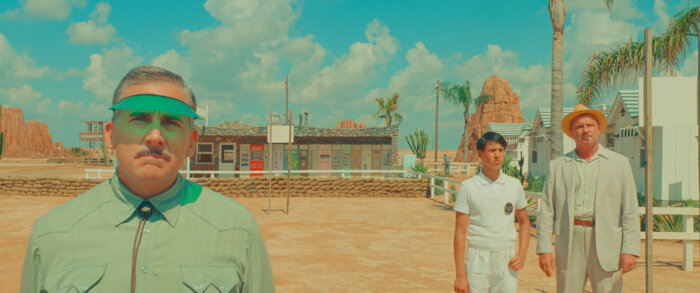
‘Asteroid City’ becomes claustrophobic for its inhabitants when an other-worldly creature shows up, and the site eventually becomes a place for quarantine, and it’s with the heightened environment that we see the already quirky characters really reach their stride.
“You know those old movies about Hollywood where they’re on the lot, and some days there’s a cowboy, and there’s a showgirl, and there’s a Roman gladiator—that’s what it’s like hanging around getting ready to work [on this film],” adds Hanks.
‘Asteroid City’ is about as Wes Anderson as it gets. And in all of the creator’s glory, fans will certainly have a lot to see visually on top of the talent of its cast—which are put together like a box of crayons among the deeper themes of grief, not having control, and a worldly environment that seems unstable.
Bryan Cranston puts it in his own words: “Whether you’re playing a lead part or a supporting role [in this film], you look for your slice. What is my kind of contribution to the story? And in this expositional dialogue, [you] set up the structure of what the audience is about to see.”
‘Asteroid City’ opens in theaters June 23.
